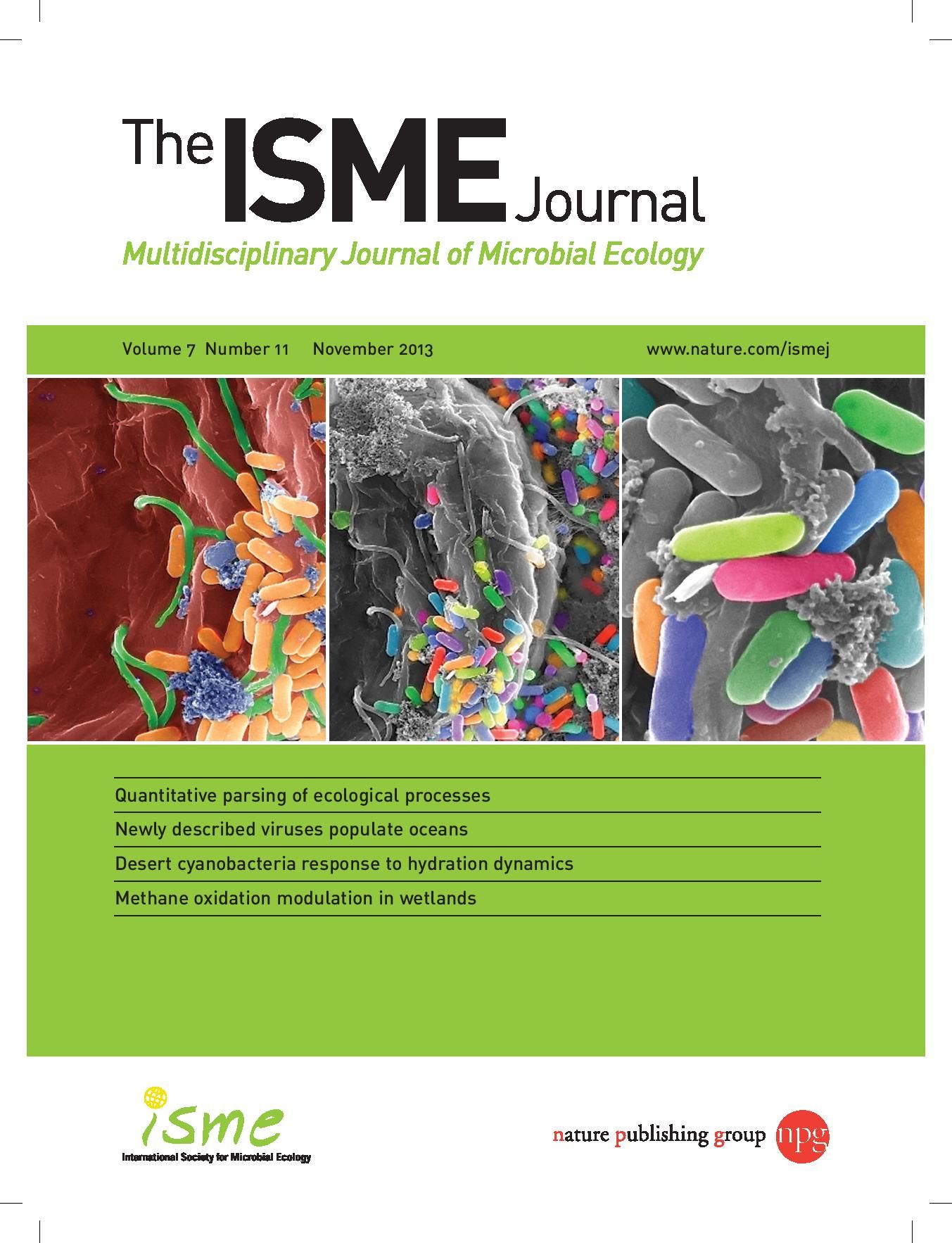南极半岛陆地细菌对野外变暖的快速生长反应。
IF 10
1区 环境科学与生态学
Q1 ECOLOGY
引用次数: 0
摘要
南极半岛西部的无冰陆地环境正在扩大,并受到新的微生物和植物的殖民化,这些微生物和植物控制着生物地球化学循环。测量微生物种群的增长率和生态系统碳通量对于了解南极洲陆地生态系统将如何应对未来变暖至关重要。我们在早期(裸土;+2 °C)和晚期(泥炭苔为主;+1.2 °C)南极洲半岛西部的连续冰川前场遗址。我们使用H218O的定量稳定同位素探测,使用原位完整岩心来确定细菌类群对短期(1个月)变暖的生长速率响应。变暖增加了两个地点细菌群落的生长速度,甚至使早期地点表现出显著生长的分类群数量增加了一倍。不同类群的生长反应各不相同。尽管变暖对细菌的相对生长率总体上产生了类似的反应,但在演替早期,变暖对生态系统碳通量的影响更强,这可能是由自养生物活动增加驱动的,自养生物将生态系统从碳源转变为碳汇。在演替后期,变暖导致许多α变形菌的生长速度显著增加,但生态系统总生产力反应较弱且相反,降低了碳汇,这表明碳通量率更强烈地受到植物群落的驱动。细菌生长和生态系统碳循环的这些变化表明,南极半岛陆地可以对温度的升高做出快速反应,这可能会对长期的元素循环和碳储存产生影响。本文章由计算机程序翻译,如有差异,请以英文原文为准。

Rapid growth rate responses of terrestrial bacteria to field warming on the Antarctic Peninsula
Ice-free terrestrial environments of the western Antarctic Peninsula are expanding and subject to colonization by new microorganisms and plants, which control biogeochemical cycling. Measuring growth rates of microbial populations and ecosystem carbon flux is critical for understanding how terrestrial ecosystems in Antarctica will respond to future warming. We implemented a field warming experiment in early (bare soil; +2 °C) and late (peat moss-dominated; +1.2 °C) successional glacier forefield sites on the western Antarctica Peninsula. We used quantitative stable isotope probing with H218O using intact cores in situ to determine growth rate responses of bacterial taxa to short-term (1 month) warming. Warming increased the growth rates of bacterial communities at both sites, even doubling the number of taxa exhibiting significant growth at the early site. Growth responses varied among taxa. Despite that warming induced a similar response for bacterial relative growth rates overall, the warming effect on ecosystem carbon fluxes was stronger at the early successional site—likely driven by increased activity of autotrophs which switched the ecosystem from a carbon source to a carbon sink. At the late-successional site, warming caused a significant increase in growth rate of many Alphaproteobacteria, but a weaker and opposite gross ecosystem productivity response that decreased the carbon sink—indicating that the carbon flux rates were driven more strongly by the plant communities. Such changes to bacterial growth and ecosystem carbon cycling suggest that the terrestrial Antarctic Peninsula can respond fast to increases in temperature, which can have repercussions for long-term elemental cycling and carbon storage.
求助全文
通过发布文献求助,成功后即可免费获取论文全文。
去求助
来源期刊

ISME Journal
环境科学-生态学
CiteScore
22.10
自引率
2.70%
发文量
171
审稿时长
2.6 months
期刊介绍:
The ISME Journal covers the diverse and integrated areas of microbial ecology. We encourage contributions that represent major advances for the study of microbial ecosystems, communities, and interactions of microorganisms in the environment. Articles in The ISME Journal describe pioneering discoveries of wide appeal that enhance our understanding of functional and mechanistic relationships among microorganisms, their communities, and their habitats.
 求助内容:
求助内容: 应助结果提醒方式:
应助结果提醒方式:


